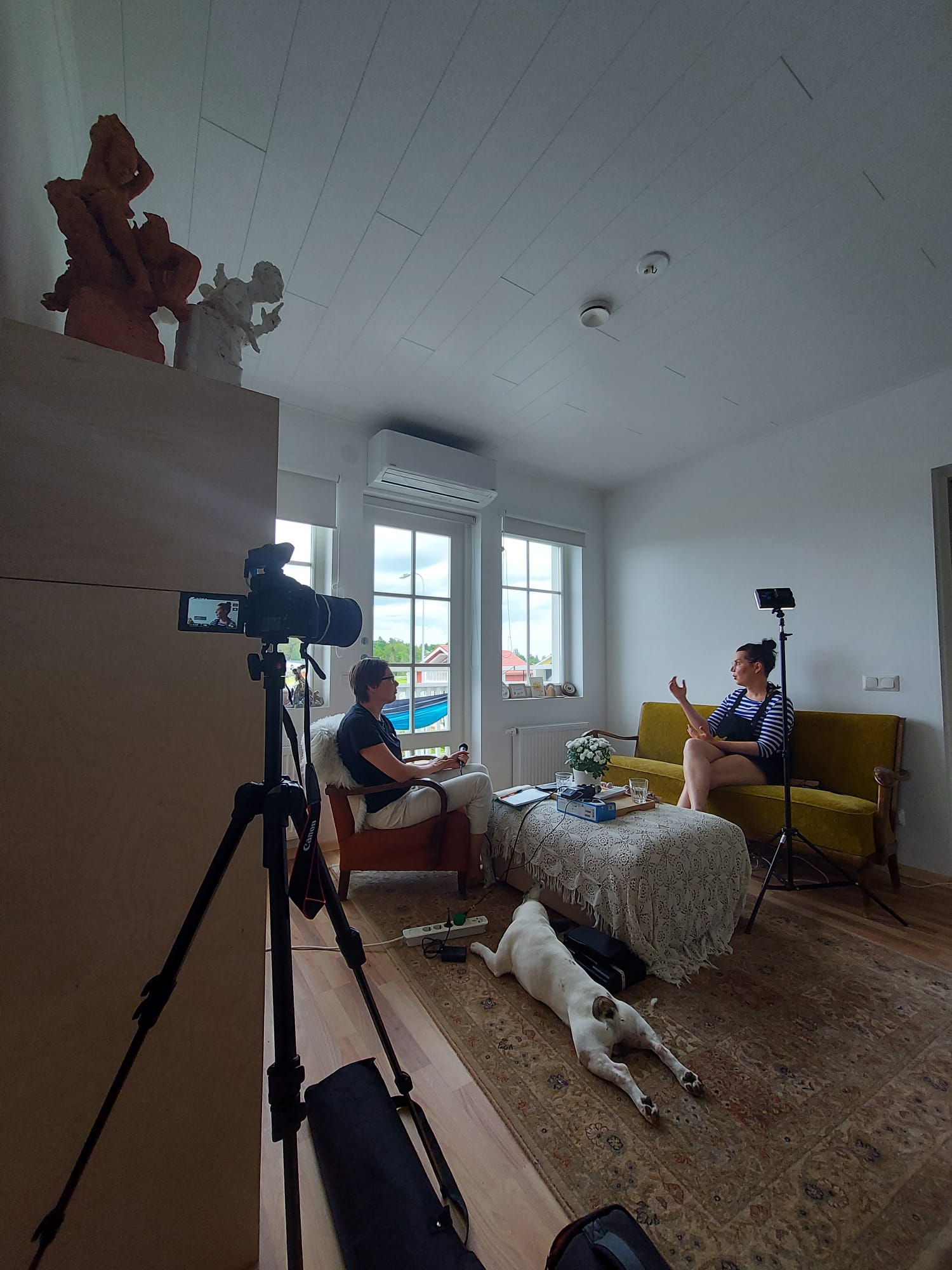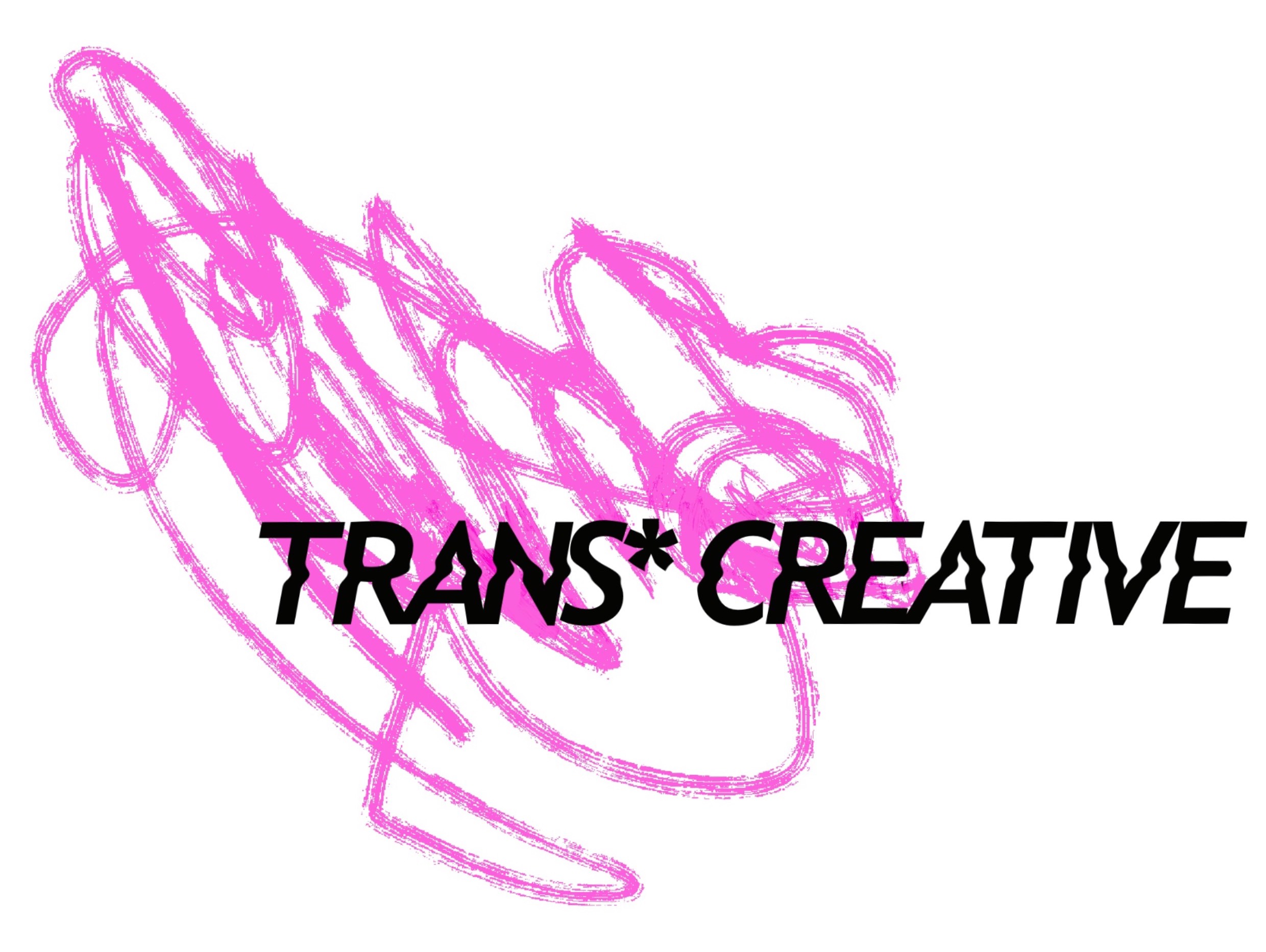
Relationality in Interviews
by: Lotta Kähkönen, Wibke Straube, and James Lórien MacDonald
“An embodied communication is more like a dance than a word”Footnote1
A serendipitous encounter in an exhibition, face-to-face meetings, and phone calls; a trip to the artist’s home in the countryside; shared curiosity about chemical pollutants and artistic interaction with toxicity; messages and meetings on Zoom; friendship and long-term cooperation in queer artistic work and cultural production—these are glimpses of relationalities that underlie the interviews conducted with artists and cultural producers in the Trans*Creative project.
Our series of video interviews is based on collaboration between members of our working group and artists and cultural producers. Understanding the process of producing the interview series in this project took some time for us. Time became an essential element in our approach. We needed time to get to know each other, understand each other’s ways of thinking and experiencing the world, and fathom how different relational intensities shape each interview. We have learned a lot about interviews as social, sensory, and emotional encounters.
Our shared aim has been to learn how artists and cultural producers make sense of the world, particularly through their art and creative work. The interviews were conducted by Lotta, Jamie, and Wibke. Mira, our film producer did the filming, recording, and editing of the videos. She has been essential in creating a comfortable and functional setting for each interview in front of the camera. In our working group, our approaches to conducting the interviews are different from each other. As a performance artist (Jamie) and two scholars (Lotta & Wibke), we have different understandings and skills when it comes to human interaction. We come from different knowledge cultures in which we have acquired our knowledge by researching, teaching, performing, and producing. Lotta and Wibke, who work in the field of gender studies, tend to plan and understand interviews with particular methodological approaches and concepts. Jamie, a stand-up comedian, performer, and experienced cultural producer, relies on his intuition and highly developed skills in reading the dynamics of human interaction.
What we call relational interviewing can happen in multiple ways. The word ‘relationality’ broadly refers to connectedness and understanding of ourselves as relational beings. In the context of social sciences, the relational approach to interviews emphasizes interview as a generative process based on a dialogical relationship, which necessitates mutually agreed terms for interacting, listening, and discussing with one another (see, for example, Fujii 2018).
An important starting point is to create a shared place, where the interviewer and the interviewee understand where the other is coming from. Sometimes, this requires discussions and talking about privileges and how certain privileges one has—such as being white or having a university education, for example—affect our everyday lives. Even in interviews between friends and colleagues who already know each other well, creating a shared place for and within the interview may take them to new places, deepen their knowledge of things discussed, and produce new insights.
But there are also other things involved in the dynamic assemblage taking place in the interview. Interviews are always situated, to use Donna Haraway’s (1988) wording. They take place in a certain time and place, involving particular social, political, economic, and cultural contexts. In addition, understanding ourselves as relational beings implicates an entanglement with others, which extends to the wider trans and queer community because the video interviews are shared online for the queer and trans community. The people we have interviewed are active in community building in various ways. The ways each discussion unfolds in front of the camera and microphones are influenced by the awareness of the importance of community, who is listening closely and affected by the interviewee’s views, memories, and experiences. The edited video interviews form a network, which binds others to action.
The interviews with artists and cultural producers are not just about relationality as an active process of narration but about relationality between various human and non-human actors. This can be illustrated, for example, with a photo of Enni Kalilainen’s interview. The image shows an active constitution of a network of actors consisting of people, objects, a place, and a dog. Lotta and Enni are sitting in a room in Enni’s home. Lotta and Mira stayed there for two days, which enabled long conversations between all three of them. Enni chose this room for the filming because she felt comfortable there. She can see the beautiful landscape through the window. Another significant factor is the presence of sculptures made by her (see the upper left corner of the photo). Then there is the dog, who, being an extremely social creature, demanded to be involved in the action. The interview was not going to happen without him. And indeed, he was actively engaged in the communication about relationships happening in the room. The camera and the microphones have a significant impact on the situation, even though Lotta and Enni are discussing things they had talked about many times before. Mira is also present in the room. She has taken this photo that reveals a bit about the way she looks at things and arranges people in the room and front of the camera.
We are most grateful to all our interview partners, companion animals, and collaborators for spending time with us. Thank you!
References
Fujii, Lee Ann 2018. Interviewing in Social Science Research: A Relational Approach. New York: Routledge.
Haraway, Donna 1988. "Situated knowledges: The science question in feminism and the privilege of partial perspective." Feminist Studies 14.3: 575–599.
Haraway, Donna 2008. When Species Meet. Minneapolis & London: University of Minnesota Press.
Footnotes:
Donna Haraway (2008, p. 26)
